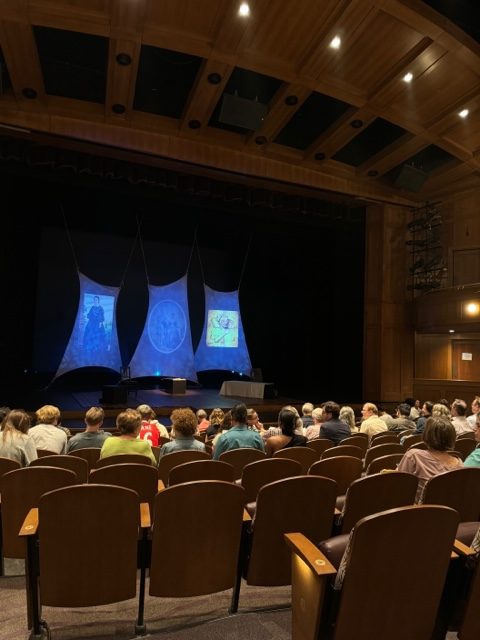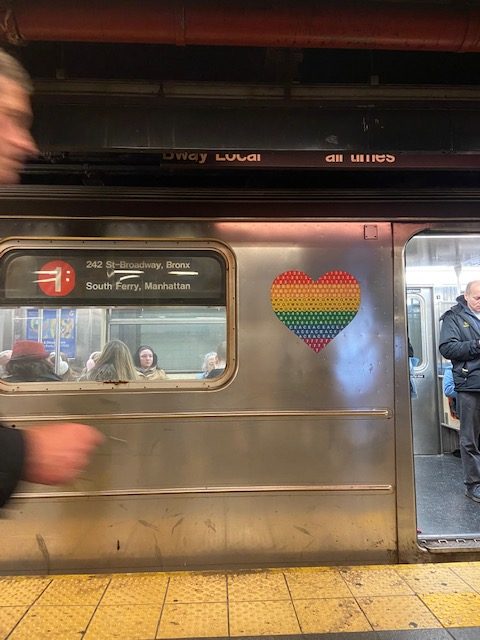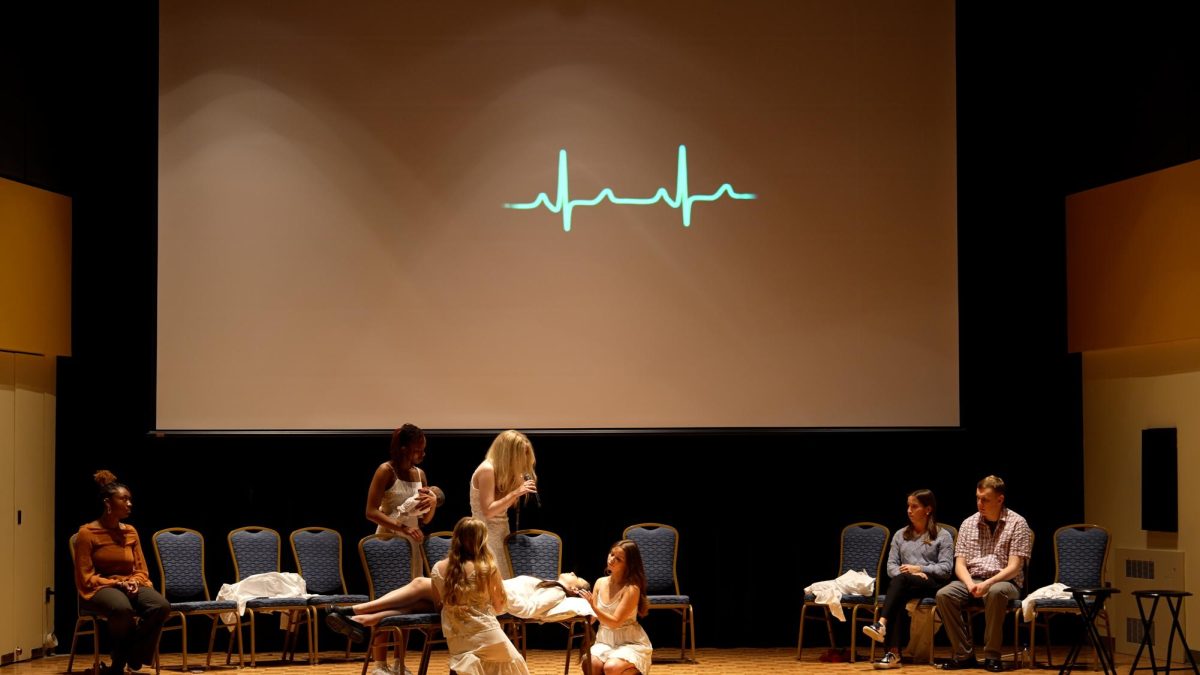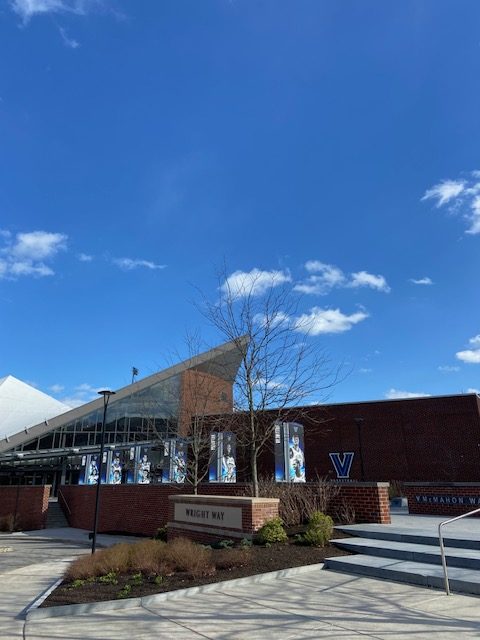This past week, the Theatre Department kicked off its SOLO NOVA Performance Festival with the first showing of I Will Speak for Myself on Wednesday, Sept. 18 in the Topper Theatre. This incredibly impactful play, written by Villanova Theatre Chair Dr. Valerie Joyce, staged a total of three performances and told the stories of 11 African American women who lived through enslavement in the U.S. The play is performed entirely by one actress, Villanova alumna Kimberly S. Fairbanks.
The set for I Will Speak for Myself was beautifully simple, with a few chairs and boxes laying on the elevated stage, many of them with the costume pieces that Fairbanks used to differentiate her characters laying across them. However, the hanging tarps across the back of the set drew the most eyes. As the audience filed in, the tarps displayed projected pictures and sketches of women from the Emancipation Era or earlier to set the scene early on for the viewer.
Fairbanks begins the performance playing Old Elizabeth, a woman who lived to see emancipation and was a female preacher with a powerful connection to her faith and her people. Elizabeth is one of two recurring characters in I Will Speak for Myself, acting as a narrator in between stories told by 10 other women. The second recurring character is an indentured servant named Mary, who came to America in 1643. Elizabeth tells Mary’s story for her throughout the play, as Mary was ripped from her homeland and dropped into a place where the language, customs, religion and land were unfamiliar.
After jumping back more than two centuries from Elizabeth to Mary, the play continues in a relatively chronological order. The audience meets Ona Judge, an enslaved woman who escaped George Washington, and Abigail, a Philadelphia free woman nursing Yellow Fever patients. These are the first true character switches the audience sees Fairbanks undertake, and her complete change in demeanor and accent between the women is fascinating to witness. The tarps behind the stage project real information and documents about each woman before and after they tell their story.
Periodically throughout the play, the timeline rolls back and returns to Mary. As Elizabeth tells her story piecemeal alongside the rest of the women, the blatant cruelty of Mary’s enslavement becomes more and more distressing. She was forced into a religion that was not hers, forced to say prayers that were not hers and, worst of all, Elizabeth points to records that suggest she was punished for having a sexual relationship with a white man. It does not take much thought to conclude that Mary, with no power or protection, had no way to say “no” to this man.
Moving forward again through time, the audience meets young Grace Wisher, a teen girl from Baltimore who helped to sew the Fort McHenry flag and was also looking for it on the night in 1814 when Francis Scott Key was inspired to write the national anthem. The contrast of well-known figures alongside the African American women behind the scenes is a crucial factor of the play’s impact. The play goes on to spotlight several writers, including Harriet Jacobs, who hid from her enslaver in an attic to escape with her daughter, and Frances E. W. Harper, a poet who backed John Brown until his execution for inciting the revolt which bears his name in Harpers Ferry, Virginia.
Once the audience has learned the stories of nine women, Elizabeth takes viewers back to Mary’s story, this time to the scene of her punishment. This is the crux of the play, as the dialogue switches from the prayer Mary was made to recite to the anguished true voice of Mary, lamenting how her life was ripped from her grasp. The stage turns red as her words, though imagined, give the audience a front row seat to her suffering.
Finally, the audience gets Elizabeth’s story. The final monologue is a perfect ending to the play. Elizabeth recalls being sold to a plantation as a young girl and the all-encompassing loneliness that overtook her. She talks of her salvation and why she preaches despite the countless people telling her she cannot or should not. This ties to another major theme of I Will Speak for Myself: religion and faith. This refers to faith in oneself, community, God and even faith in the people who betray you.
Everyone who left the show was taken both by the powerful message of the play and Fairbanks’ incredible talent. Each character was distinct from the last in the way she talked, acted and carried herself across the stage.
“I thought she was very talented,” junior Jane Maleady said. “She put on a wonderful performance. Her stamina is crazy.”
Playing 11 characters in a 55-minute show is certainly a feat, and Fairbanks did it effortlessly, committing to telling each story and to honoring each woman that she put on the stage. Their stories show firsthand the darker sides of American history, and center on the strength of African American women, determined to protect and promote themselves, their families and their communities.






